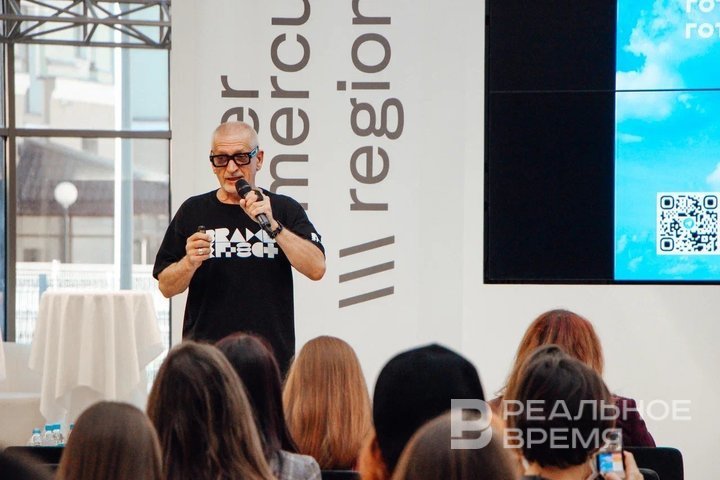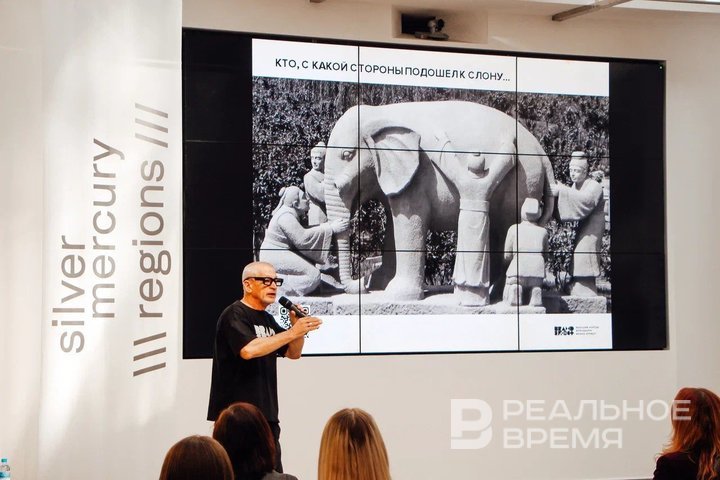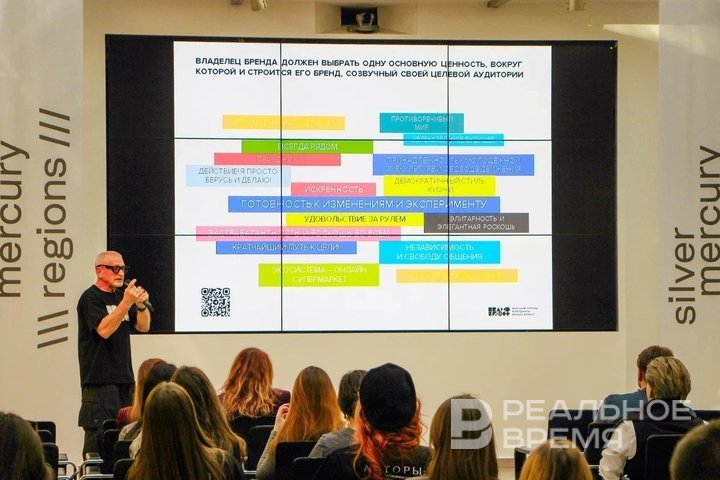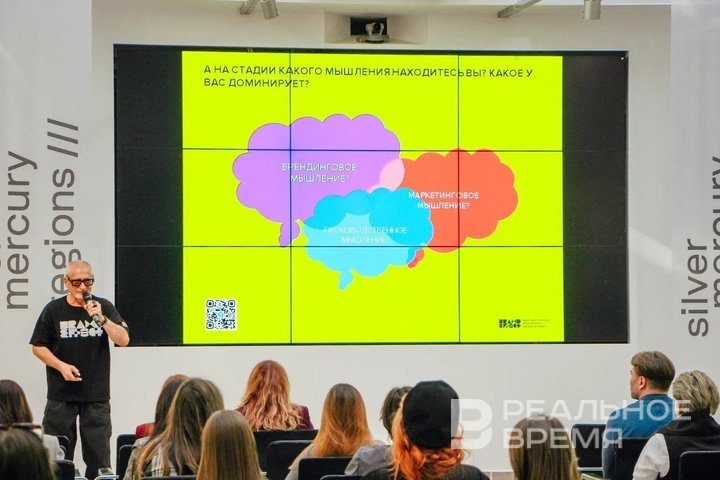What is the difference between Converse, Nike and Vans, or How to create a brand
International Festival of Advertising and Marketing Communications Silver Mercury Regions has taken place in Kazan

“A brand is your tangible value, but an intangible asset," said Sergey Lelikov, a professor of branding at the Presidential Academy and the Higher School of Economics. At a lecture at the SilverMercury Regions International Advertising and Marketing Communications Festival, he explained the difference between branding and marketing and why it is important for businesses to distinguish them. What is the difference between the three corporations that produce sneakers, and what does it have to do with grandmothers feeding pigeons? — read in the Realnoe Vremya report.
“How are you still working with this?!”
“What is a brand?” with this question the audience began a lecture by Sergey Lelikov, a branding teacher at the Presidential Academy and the Higher School of Economics, entitled “Marketing is sex for money, branding is for love”. Among the audience's responses —positioning, promises, personality, packaging, aesthetics. How many people, so many opinions.
“I have a question," Lelikov responded, “How are you still working with this?”! In other words, you come to a client and offer your branding services. But at the same time, you mean one thing by branding, the client means another, and your specialist means the third.
Here the speaker cited the example of the Sufi parable of the blind sages and the elephant. It tells the story of a group of blind people who encounter an elephant. One of the sages touched the elephant's side and said, “We are at the walls of a big city," the second grabbed the elephant's leg and mistook the animal for a tree in the forest, and the third touched the tail and said, “A snake attacked us.”
“It's the same with our brand definition. Let's define what it is anyway. A brand is not just a logo, as many people think. A brand is a complex of ideas, emotions, and associations embedded in the consumer's head. In other words, a brand is a world that people would like to belong to," explained Lelikov.

But here comes another variable — marketing, the speaker continued. These two concepts also need to be clearly formulated. So, marketing is the product being sold, and branding is its image:
“Branding gets into your head, and marketing gets into your hands. The brand is immaterial, it is impossible to touch it, because it is an image in the client's head. Only the object on which the brand's logo is applied is material. This is where the “state” boundary between concepts runs. If there is only a product without a brand, then it's about the price. And if there is a brand, then we are talking about values.”
If the company does not have a brand, then the competition is based on the principle of “who is cheaper”, the brand manager explained. Accordingly, it is simply impossible to increase the cost of the product in this case. As for the brand?
“A brand is your tangible value, but an intangible asset. Coca-Cola has manufacturing plants and a brand. If a beverage factory burns down, what will be left? The brand. It will be in the minds of the customers. The production will burn down, but the brand will remain. It can be used to raise new funds and build a new plant," Lelikov vividly explained.
“Same product, different brands”
The brand also forms the target audience of its bearer, “cutting off the superfluous ones on the approaches.” It carries a certain value. This allows employees not to be distracted by those who “just came in for a walk”.
“What is the value of this particular watch?” the speaker asked, pointing to a photo of a watch with a skull. “What better way to remind us of the frailty of existence than a skull, the main symbol of death? It literally counts down the hours of our stay on this earth. This value is shared by a group that wants to present itself as philosophers. This is a man who positions himself as a fatalist," the speaker gave an example.
As Lelikov explained, the value of the product is formed from the value embedded in the minds of customers.

An interesting example turned out to be the example of three corporations producing the same products — sneakers. We are talking about Converse, Nike and Vans, which, despite the similarity of products, have different brands:
“The same product, different brands. What, besides the product, does Converse sell? A democratic lifestyle. It was worn by a very large stratum of musicians: to create, to break away, to express themselves. It's about freedom and democracy.”
Vans, according to Lelikov, sells “movement," and Nike is self-affirmation and the shortest path to the goal. “Conclusion: a brand is a value that we give in addition to the product. It needs to be found, perfectly formed and conveyed to the consumer," the teacher summed up the second part of the lecture.
Not everyone is ready for the brand
Lelikov devoted the third part of his speech to the topic of brand readiness. In his opinion, there are three types of thinking that determine this readiness: production, marketing and branding.
“All three types grow from the level of development of society. Industrialisation: factories, production of machinery appeared. All this went to a market that was absolutely not saturated with products. This is a mindset in which the product remained in short supply, and the consumer was satisfied with its availability. Then marketing thinking began, when there were more manufacturers and it became impossible to compete only at the expense of price / quality. Then the branding mindset appeared," the speaker explained.
- Production thinking: a mother's blind love for the product. The consumer is not taken into account, the emphasis is on quality and technical characteristics. “We don't sell what the customer needs, but what we have.”
- Marketing thinking: the consumer comes into view. The focus is on the consumer characteristics of the product. “Sales volume at any price — we don't care who we sell to!”
- Branding thinking: focus on values. Those who share the brand's values are important. “We care about who and what to sell!”

At the same time, according to Lelikov, branding thinking in Russia has only just begun to emerge. Such companies care about who they sell to.
“Imagine a picture: a park, a sunny day, an old woman feeding pigeons. All the animals in the area flock to her: sparrows, bluebirds, and pigeons. This old lady is running out of bread — it's an advertising campaign. Then another person comes in and starts pouring crumbs from his loaf. All the birds fly over to him. And then the first old lady: “Were you just friends with me for a loaf?” This is marketing thinking. Branding is when some of the “birds” remain even without a “loaf”.”